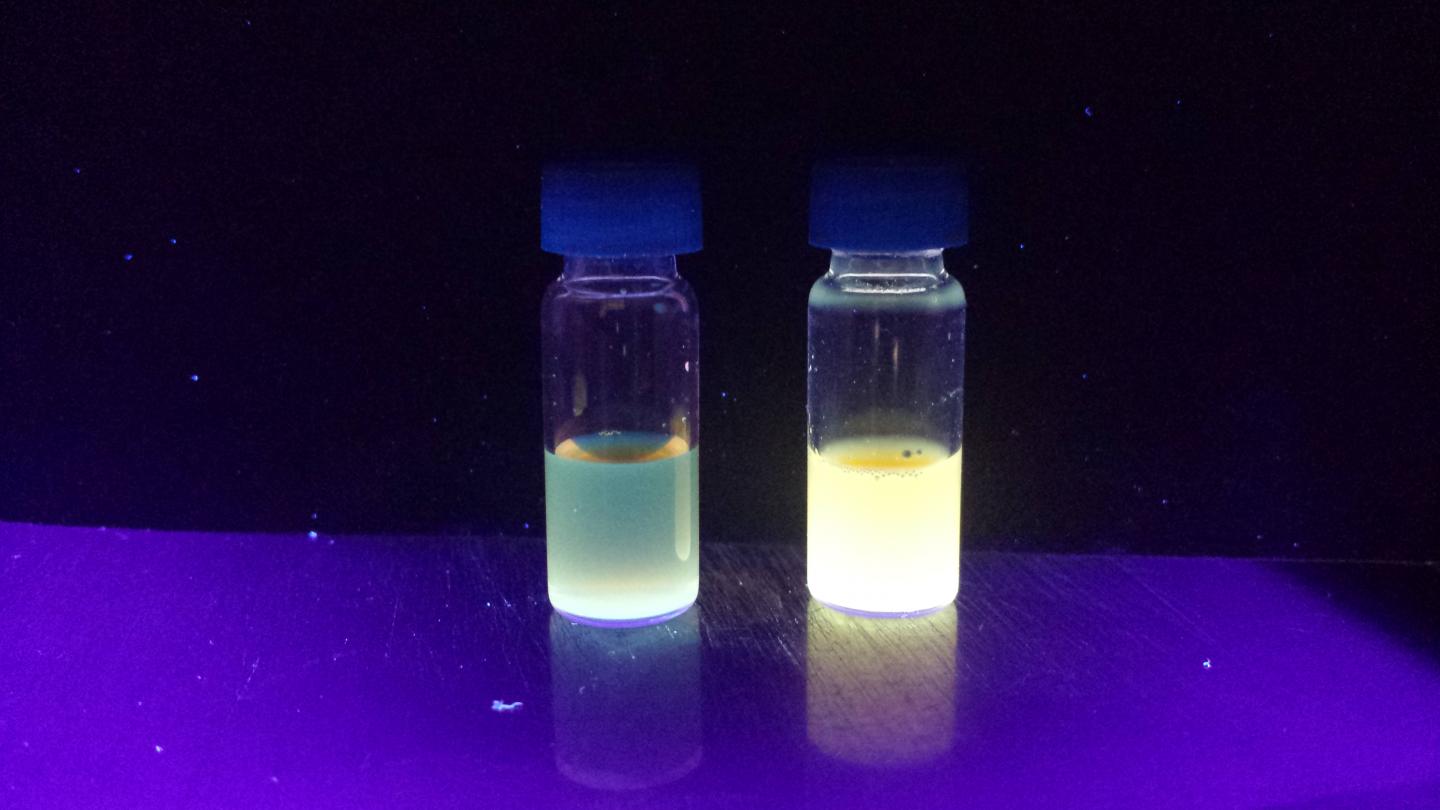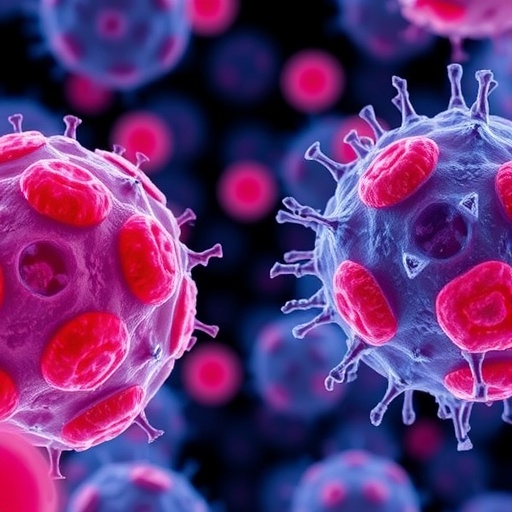
Credit: Jin-sil Choi/ Hsian-Rong Tseng
Tattoos aren't just for body art. They can have medical applications, too. Doctors are using them on patients to mark an area for future treatment — particularly for non-melanoma skin cancer such as basal cell carcinoma — but the inks can cause problems. Now scientists have developed a better solution. In the journal ACS Nano, they report a new ink that glows only under certain light conditions and can disappear altogether after a period of time.
Patients diagnosed with skin cancer typically have to wait up to three months between a biopsy confirming their condition and treatment. Doctors can mark the spot for possible future treatment using carbon graphite, India ink or fluorescent dye. But these pigments permanently color the skin, and can require laser or surgical removal after a patient has undergone surgery. They can also cause inflammation and discomfort at the site of the tattoo. Kai Chen, Gary S. Chuang, Hsian-Rong Tseng and colleagues wanted to develop a safer, more patient-friendly option.
The researchers created a time-limited pigment by cross-linking fluorescent supramolecular nanoparticles. Under ambient lighting, the nanoparticles are invisible, which would avoid unwanted markings in a patient's skin. But the pigment glows under light shining at a wavelength of 465 nanometers, so doctors would be able to use a special light to see the dye. Testing in mice showed that tattoos created with these nanoparticles didn't cause inflammation and lasted for three months. This would be long enough to mark a spot from biopsy through treatment for a non-melanoma patient.
###
The authors acknowledge funding from the National Institutes of Health and the Department of Radiology at the University of Southern California.
The abstract that accompanies this study is available here.
The American Chemical Society is a nonprofit organization chartered by the U.S. Congress. With nearly 157,000 members, ACS is the world's largest scientific society and a global leader in providing access to chemistry-related research through its multiple databases, peer-reviewed journals and scientific conferences. Its main offices are in Washington, D.C., and Columbus, Ohio.
To automatically receive news releases from the American Chemical Society, contact [email protected].
Follow us: Twitter Facebook
Media Contact
Michael Bernstein
[email protected]
202-872-6042
@ACSpressroom
http://www.acs.org
############
Story Source: Materials provided by Scienmag





